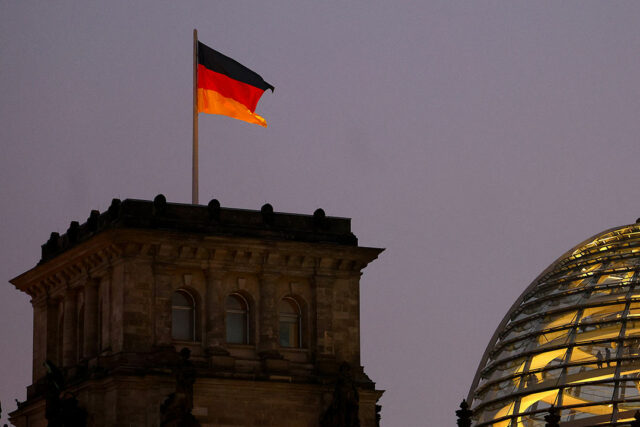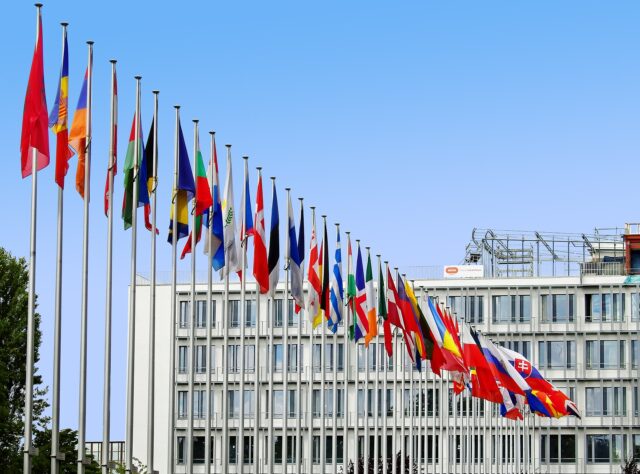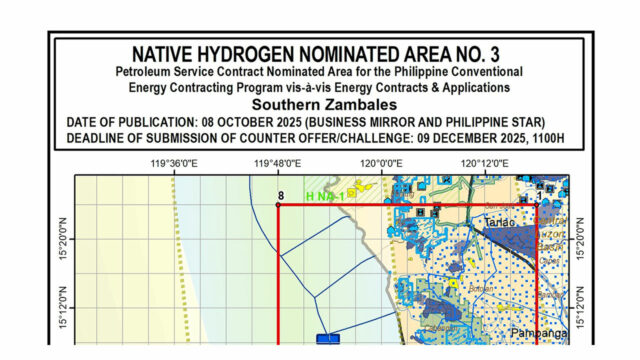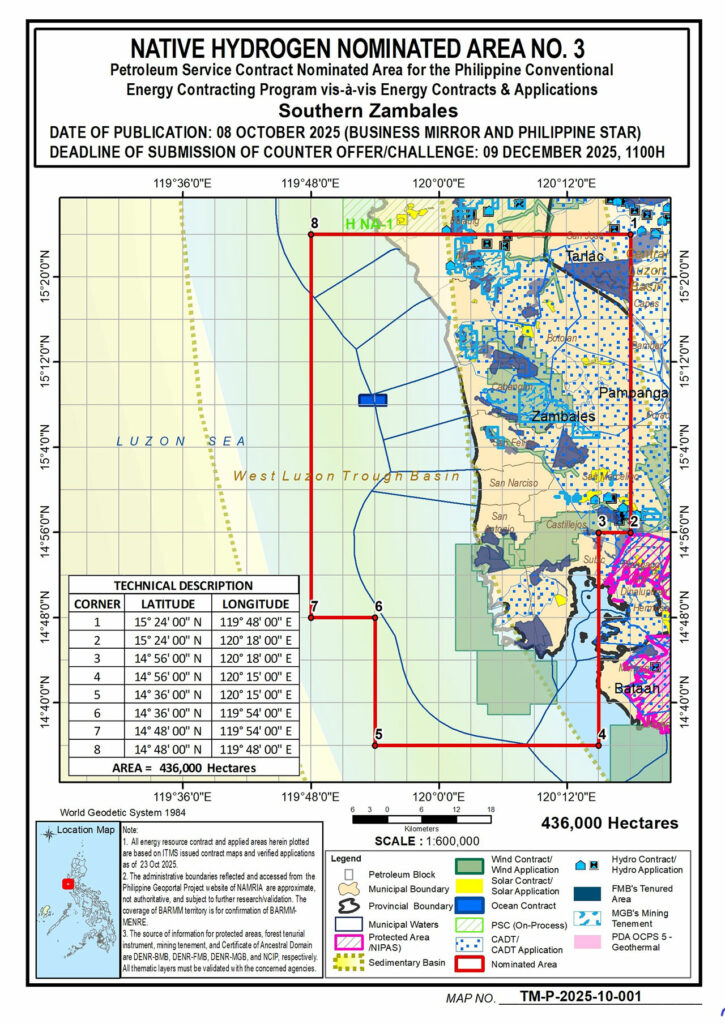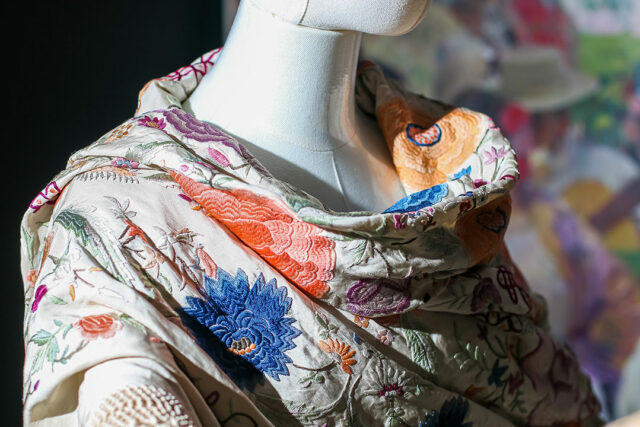Mouthwash may cure ‘the clap’
PARIS — In the 19th century, before the advent of antibiotics, Listerine mouthwash was marketed as a cure for gonorrhoea. More than 100 years later, researchers said Tuesday the claim may be true.
Hong Kong court sentences three people to prison over bomb plots in 2019 and 2020
HONG KONG — A Hong Kong court on Monday sentenced three people to prison terms of up to 18 years over three bomb plots in 2019 and 2020.
In September, a jury found Ho Cheuk-wai, 41, Lee Ka-pan, 31, and Cheung Ka-chun, 35, guilty of conspiracy to cause explosions with intent to endanger life or property.
Ho received a sentence of 18 years, while the other two were sentenced to 16 years and eight months.
Judge Johnny Chan said Ho was the mastermind, showed no remorse, and had no grounds for a reduced sentence. Lee and Cheung, he said, were first-time offenders and were each granted a four-month reduction.
“The court must provide sufficient deterrence, so the need for defendant’s rehabilitation is less important than the former point,” Chan said.
“Also, if remorse is limited or superficial, there’s no way to talk about rehabilitation and correction.”
The defendants were accused of planting a homemade bomb in a hospital toilet at Caritas Medical Centre in Kowloon and of placing a bag containing two bombs on a train at Lo Wu station. Both devices detonated, but no injuries were reported.
A group called “92 Sign” claimed responsibility on the Telegram messaging app, saying it wanted medical workers to strike and the government to close the borders to curb the spread of the Covid-19 virus.
They were also accused of planting a bomb near a car park in a residential neighborhood ahead of a memorial event for a student who died during the city’s 2019 pro-democracy protests.
The defendants were tried under the United Nations Anti-Terrorism Ordinance, which was implemented in Hong Kong following a Security Council resolution on countering terrorism.
All the defendants pleaded not guilty to the charges. Five other defendants were acquitted.
The trio appeared calm and smiled as the judge handed down the sentence, while their relatives burst into tears in court.— Reuters
US fighter jet, helicopter crash in South China Sea during routine drills

A US fighter jet and military helicopter crashed in the South China Sea on Sunday, during what the US Pacific Fleet described as “routine operations” involving the USS Nimitz carrier strike group.
A two-man F-18 fighter jet and an MH-60R multirole helicopter carrying five crew members “went down in the waters” of the disputed waterway in separate incidents during routine drills by the US Navy’s Carrier Strike Group 11, according to the US Pacific Fleet. All personnel were safely recovered.
“The cause of both incidents is currently under investigation,” it said in a Facebook post on Monday.
The crashes, which happened within 30 minutes of each other, took place in one of the world’s most contested waterways, where tensions between the Philippines and China continue to simmer over contesting sea claims.
Beijing continues to lay its sovereignty over the energy-rich waters despite a 2016 ruling by a United Nations-backed court that voided its claims.
The Southeast Asian nation has stepped up efforts to push back against China’s sweeping claims, conducting naval drills with allies including the US as it leans on multinational cooperation to bolster maritime security.
At 1,092 feet, the USS Nimitz is one of the US Navy’s nuclear-powered supercarriers and is built to deploy squadrons of fighter jets on short notice at sea, long-serving as a projection of American military might overseas.
Now in the South China Sea after a three-month stint in the Middle East, the 50-year-old carrier is expected to return to the US for decommissioning following its Asia leg, USNI News reported. — Kenneth Christiane L. Basilio
DigiPlus earns first ASEAN Golden Arrow Award for corporate governance excellence

DigiPlus Interactive Corp. (DigiPlus), the country’s digital entertainment provider behind BingoPlus, ArenaPlus, and GameZone, achieved a major milestone in corporate governance excellence by earning its first-ever Golden Arrow Award.
The recognition was conferred on Oct. 23, 2025, during the awarding ceremony organized by the institute of Corporate Directors (ICD), the Philippines’ Domestic Ranking Body (DRB) for the ASEAN Corporate Governance Scorecard (ACGS).
DigiPlus received a 2-Golden Arrow Award, one of the five levels of distinction granted to publicly listed companies that demonstrate outstanding corporate governance performance.
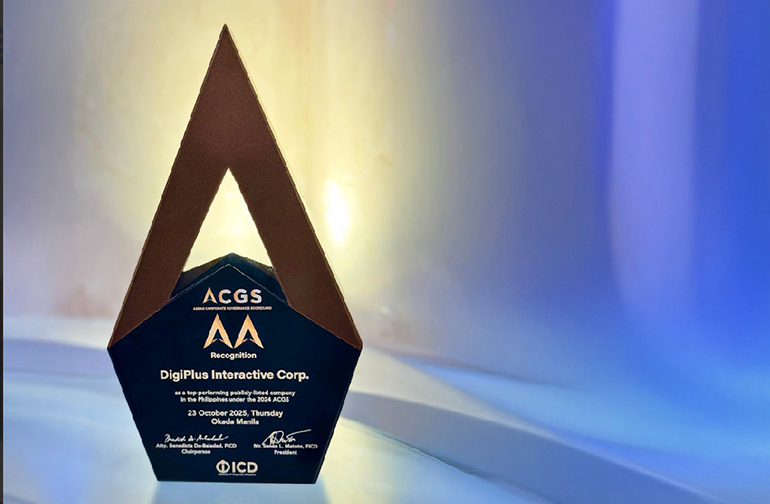 The Golden Arrow Recognition is among the Philippines’ most prestigious corporate honors, recognizing companies that lead in transparency, accountability, and integrity.
The Golden Arrow Recognition is among the Philippines’ most prestigious corporate honors, recognizing companies that lead in transparency, accountability, and integrity.
Anchored on the ACGS framework, it evaluates how effectively organizations uphold shareholder rights, engage stakeholders, promote sustainability, ensure transparency, and maintain strong board oversight in alignment with both local and international governance standards.
“Earning our first Golden Arrow affirms DigiPlus’ commitment to upholding the highest standards of corporate governance,” said DigiPlus Chairman Eusebio H. Tanco. “We are proud to be recognized among the country’s most trusted, publicly-listed companies and remain focused on creating a long-term value for our shareholders, stakeholders, and the customers and the communities we serve by leading with transparency, accountability, and integrity.”
Spotlight is BusinessWorld’s sponsored section that allows advertisers to amplify their brand and connect with BusinessWorld’s audience by publishing their stories on the BusinessWorld Web site. For more information, send an email to online@bworldonline.com.
Join us on Viber at https://bit.ly/3hv6bLA to get more updates and subscribe to BusinessWorld’s titles and get exclusive content through www.bworld-x.com.
German foreign minister to meet India’s Goyal, NATO’s Rutte after postponing China trip
BERLIN — German Foreign Minister Johann Wadephul will meet NATO’s Secretary General Mark Rutte, Indian Trade Minister Piyush Goyal and other senior policymakers during a trip to Brussels starting on Monday, a spokesperson for his ministry said.
The visit comes after Wadephul postponed a trip to China, originally scheduled to start on Sunday, because Beijing confirmed only one of his requested meetings, in a sign of rising tension with Berlin over trade and security matters.
During the trip to Brussels, Wadephul will also meet with European Commission President Ursula von der Leyen, EU Trade Commissioner Sefcovic and EU foreign policy chief Kaja Kallas, the spokesperson for Germany’s foreign ministry said.
“The focus of the consultations with representatives of the EU and NATO – the organizations that bring together our most important and closest partners and allies – will be on continued support for Ukraine and European security and defense capabilities,” the spokesperson said.
Another focus of the talks will be international trade issues, including prospects and potential solutions for ensuring a smooth supply of important raw materials, in particular rare earths and computer chips, two areas that are subject to bottlenecks.
India’s Goyal is in Brussels for trade policy talks, the spokesperson said.
The EU and India are working to meet a year-end deadline for signing a free trade pact.— Reuters
EU considers more flexible climate target in hunt for deal, draft shows
BRUSSELS — European Union countries are negotiating proposals to give industries a more flexible path to meeting climate goals, a draft EU document showed, as the bloc attempts to win support from governments for a new 2040 emissions-cutting target.
The EU is negotiating a legally-binding target to cut net greenhouse gas emissions 90% by 2040, and is racing to approve the goal before world leaders gather for the UN’s COP30 climate summit on November 6.
However, months of negotiations have so far not yielded a deal, as some governments have pushed back on green measures, and raised concerns over how to finance the low-carbon transition alongside priorities like defense and revitalizing industries.
A draft EU compromise proposal, seen by Reuters, showed countries have drafted plans that would allow the EU to review the 2040 target every two years – potentially allowing Brussels to weaken the goal in future.
The draft would also fix into law a commitment that if forests absorb less CO2 emissions than expected, or technologies to remove CO2 from the atmosphere develop slower than planned, other industries will not be forced to cut emissions faster to deliver the 2040 goal.
“Possible shortfalls in one sector should not be at the expense of other sectors,” said the draft, dated October 25.
NO CHANGE ON CARBON CREDITS QUOTA
The new compromise reflects demands made by EU government leaders at a summit last week, where they debated the “enabling conditions” needed to meet green goals while avoiding higher energy bills for citizens and supporting businesses grappling with cheap Chinese imports and US tariffs.
EU countries’ ambassadors will negotiate the proposal next week, before their climate ministers attempt to approve the target on November 4.
The draft proposal did not change the 90% emissions-cutting target, nor the 3% of the goal that can be met by buying foreign carbon credits, rather than domestic efforts – although countries are still debating this. French President Emmanuel Macron said last week credits could potentially cover up to 5%.
In an attempt to win over skeptical governments, the European Commission has promised changes to other green measures, including price controls in an upcoming carbon market for transport fuels, as demanded by Poland and the Czech Republic. Brussels is also considering weakening its 2035 combustion engine car ban after pressure from Germany and Italy.
A spokesperson for Denmark, which holds the rotating EU presidency and drafted the document, declined to comment.— Reuters
Gross borrowings fall in September
THE NATIONAL Government’s (NG) gross borrowings declined by 65% in September, reflecting a slowdown in public spending.
The latest data from the Treasury showed that total gross borrowings fell by 64.89% to P128.913 billion in September from P367.183 billion in the same month a year ago.
Month on month, gross borrowings slid by 74.65% from P508.527 billion in August.
Domestic borrowings, which made up 93.51% of the total, slipped by 16.98% to P120.548 billion in September from P145.2 billion in the same month last year.
This was composed of P111.848 billion in fixed-rate Treasury bonds (T-bonds) and P8.7 billion in Treasury bills (T-bills).
External borrowings, which mainly consisted of project loans, plunged by 96.23% to P8.365 billion in September from P221.983 billion in the previous year.
“This (lower gross borrowings) could very much reflect the lower share of foreign borrowings to the total borrowing mix of the government and could also reflect prudence of some private sector borrowers by reducing US dollar-denominated and other foreign borrowings in view of foreign exchange risks involved,” Rizal Commercial Banking Corp. Chief Economist Michael L. Ricafort said in a Viber message.
The peso closed at P58.196 per dollar on Sept. 30, down by 35.1 centavos from its P57.845 finish on Dec. 27, 2024.
“(The) lower amount of approved foreign loans reflected that cautiousness vs. potential forex (foreign exchange) losses that entail US dollars and other foreign loans,” Mr. Ricafort said.
Philippine Institute for Development Studies Senior Research Fellow John Paolo R. Rivera said in a Viber message that the lower borrowings reflected slower government spending, particularly on infrastructure, and the government’s “deliberate recalibration of financing strategy” for the fourth quarter.
“While this moderation in borrowings can help ease immediate pressure on yields and debt servicing costs, it also raises two cautions such as if the underlying budget deficit remains large or rises further, the NG may need to ramp up borrowings again potentially at less favorable terms,” Mr. Rivera said.
The NG’s gross borrowings stood at P2.4 trillion in the January-to-September period, up by 4.11% from P2.3 trillion a year ago. This made up 92.11% of the revised P2.6-trillion financing program for 2025.
Domestic debt rose by 9.16% to P1.96 trillion in the period ending September from P1.795 trillion a year ago. This accounted for 92.83% of the P2.04-trillion domestic borrowing program this year.
Broken down, domestic debt was composed of P1.05 trillion in fixed-rate Treasury bonds, P425.61 billion in retail Treasury bonds, P300 billion fixed-rate Treasury notes, and P181.15 billion in T-bills.
As of end-September, gross external debt stood at P434.597 billion, down by 13.84% from P504.447 billion a year ago. This made up 89.03% of the P488.174-billion external borrowing program this year.
Broken down, foreign debt was composed of P191.965 billion in global bonds, P171.307 billion in program loans, and P71.325 billion in project loans.
External borrowings as of end-September were padded by the global bond issuance that raised $3.3 billion or P192 billion in late January but settled in February. — Aaron Michael C. Sy
PHL anticipates stronger trade flows from key ASEAN deals
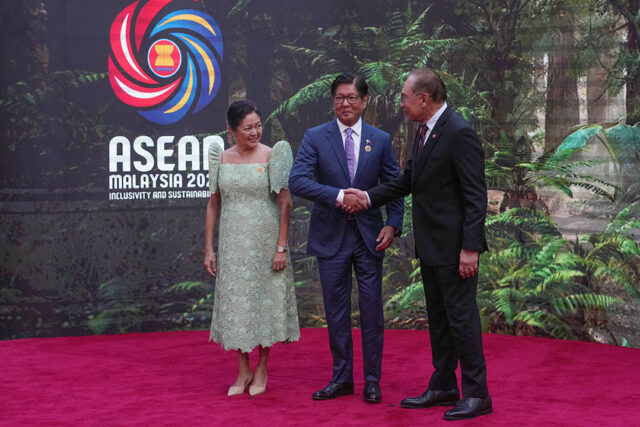
By Chloe Mari A. Hufana, Reporter
KUALA LUMPUR — The Philippines expects stronger regional trade and investment flows as two key trade pacts — the Association of Southeast Asian Nations (ASEAN)-China Free Trade Area (ACFTA) 3.0 Upgrade and the Second Protocol to Amend the ASEAN Trade in Goods Agreement (ATIGA) — promise to modernize economic cooperation across the regional bloc.
At a news briefing here on Sunday, Palace Press Officer Clarissa A. Castro quoted Special Assistant to the President for Investment and Economic Affairs Frederick D. Go as saying the ATIGA upgrade will keep the intra-ASEAN trade pact relevant amid evolving global trade conditions.
“The enhanced agreement offers significant benefits, particularly through improvements in trade facilitation measures, transparency provisions, dispute settlement mechanisms, and the inclusion of new and emerging trade elements,” she said.
The amended ATIGA was inked by Trade Secretary Ma. Cristina A. Roque on Saturday and was turned over to the ASEAN leaders on Sunday.
Ms. Castro said the new provisions, including mutual recognition of Authorized Economic Operators, will allow certified traders faster cargo clearance throughout ASEAN.
The agreement also promotes self-declaration of origin, electronic certification (e-form B), and the acceptance of digital documentation, making cross-border trade easier for Philippine businesses.
“Businesses will find it easier to comply with administrative requirements self-declaration of origin, the implementation of the Electronic Certificate of Origin (e-Form D), and the acceptance of digital documentation,” Ms. Castro added.
Meanwhile, the Philippines and Canada aim to finish free trade agreement negotiations by 2026, vowing to accelerate talks following a bilateral meeting at the 47th ASEAN Summit between President Ferdinand R. Marcos, Jr. and Canadian Prime Minister Mark Joseph Carney.
They talked about efforts to deepen a trade relationship valued at more than $3 billion, covering sectors such as manufacturing, defense, and both conventional and clean energy.
Mr. Carney, in a separate statement, outlined Canada’s strategy to double its non-US exports over the next decade, positioning Southeast Asia as a key partner in that effort.
Canada and the Philippines agreed to fast-track negotiations on a bilateral free trade agreement, with the goal of completing talks by 2026.
They also committed to advancing a broader Canada-ASEAN free trade pact, which they aim to conclude during the Philippines’ ASEAN chairmanship the same year.
The two leaders also welcomed the prospect of a bilateral visit “at the earliest opportunity” and agreed to maintain close coordination as both countries look to expand trade and investment cooperation.
Meanwhile, Ms. Castro said the ACFTA 3.0 upgrade will make the ASEAN-China partnership “more modern, more comprehensive, and better aligned with today’s global realities.”
Citing Foreign Affairs Secretary Ma. Theresa P. Lazaro, Ms. Castro said the revised framework will deepen cooperation in digital and green economies, enhance sustainable supply-chain connectivity, and promote the empowerment of micro, small and medium enterprises (MSMEs) within regional value chains.
The ACFTA 3.0 Upgrade expands the original pact, which was signed in 2002, by introducing provisions on competition, consumer protection, digital economy, green economy, and supply-chain connectivity, on top of trade in goods, customs procedures, and investment cooperation.
The pact with China was ASEAN’s first FTA outside the bloc and remains one of the most important partnerships of the bloc.
Beijing is the largest trading partner of the bloc since 2019, reaching $507.9 billion in 2019, according to ASEAN’s website.
The ASEAN-China FTA in 2005 quadrupled the trade between the two.
ASEAN studies lecturer at De La Salle-College of St. Benilde Josue Raphael J. Cortez said the upcoming signing of the ACFTA 3.0 Upgrade underscores ASEAN’s commitment to strengthening ties with major global powers while ensuring its economies remain adaptable and competitive.
The enhanced pact reflects the bloc’s readiness to address global trade challenges, green transition, and sustainable growth — priorities shared with key partners such as China, the US, and the European Union, he added.
“With China showing further commitment to embrace green prosperity, we may expect that this partnership will signal deepened ties between the 11-country membership and Beijing not just on tech transfer, but also in devising ways on how we may effectively navigate green transition together,” he said via Facebook Messenger.
“At the same time, in recognition of the integral role MSMEs play in bolstering the Southeast Asian economies, this may also be a way for the sector to gradually embrace digitalization, which is now the name of the game in conducting business.”
DoE seeks challengers for hydrogen exploration site in southern Zambales
By Sheldeen Joy Talavera, Reporter
THE Department of Energy (DoE) is inviting interested industry players to submit competing proposals to explore potential native hydrogen resources in a nominated area in southern Zambales, with four more in the pipeline.
In an invitation published on its website, the DoE said that interested companies can submit a challenge for a nominated area spanning 436,000 hectares to secure a contract under the Philippine Conventional Energy Contracting Program.
Applicants may submit their counter offers until Dec. 9, 11 a.m.
Edgar Benedict C. Cutiongco, president of the Philippine Petroleum Association, said that the newly nominated area application for native hydrogen exploration marks “a strategic expansion of the Philippines’ hydrogen frontier.”
Southern Zambales — part of the geologically significant Zambales mountain range — contains ultramafic rocks capable of producing native hydrogen through a natural geochemical process called serpentinization, he said.
“This nomination signals growing momentum in the search for naturally occurring hydrogen, also known as white hydrogen, which is gaining global traction as a clean energy investment,” Mr. Cutiongco told BusinessWorld.
Demujin F. Antiporda, DoE director for the Energy Resource Development Bureau, told BusinessWorld that there are four more nominated areas that will be up for challenge. These include two hydrogen contracts, and two development and production petroleum service contracts.
Mr. Antiporda said that foreign firms submitted these nominated areas.
“We are the first one who offered a bid round in the world for hydrogen,” he said, adding that hydrogen development is still at an early stage globally.
The Philippine government recently awarded eight new petroleum service contracts, representing a potential investment of around $207 million over a seven-year exploration period.
The awarding of service contracts provides an opportunity to explore potential petroleum and hydrogen resources in key areas across the Sulu Sea, Cagayan, Cebu, Northwest Palawan, East Palawan, and Central Luzon.
Several local and foreign companies secured petroleum service contracts, including Pangilinan-led PXP Energy Corp., Australia’s Triangle Energy (Global) Limited and Gas 2 Grid Pte. Ltd, United Kingdom’s Sunda Energy Plc., Israel’s Ratio Petroleum Ltd, and US-based Koloma, Inc.
With contracts in place, the companies can start their respective work programs, which include geological and geophysical studies, seismic surveys, and drilling activities, as appropriate, to assess the potential of the contract areas.
While seeking to increase the utilization of indigenous petroleum resources, the Philippines is also exploring the potential of hydrogen as an alternative fuel to reduce dependence on imported oil.
The Philippines sees the potential of the development and domestic production of hydrogen and its derivatives as a “promising, innovative, and eco-friendly” energy solution that can substantially support the ongoing energy transition efforts.
“With multiple ultramafic-rich zones across the archipelago, the country is uniquely positioned to lead in this emerging field,” Mr. Cutiongco said.
“The combination of favorable geology and a progressive fiscal regime makes native hydrogen exploration a compelling next step beyond traditional hydrocarbon development.”
Mr. Cutiongco said that this would not only strengthen the Philippines’ energy roadmap but also open new avenues for investment, research and regional collaborations with its Association of Southeast Asian Nations peers.
2 BusinessWorld reporters win awards
TWO BusinessWorld reporters were recognized at the 34th annual awards of the Economic Journalists Association of the Philippines (EJAP) on Friday.
Beatriz Marie D. Cruz received the award for Reporter of the Year for Finance. Ms. Cruz has been with BusinessWorld for three years, and currently covers the Property, Technology, and Launchpad beats.
Luisa Maria Jacinta C. Jocson was awarded Reporter of the Year for Banking. Ms. Jocson was a senior reporter for BusinessWorld who covered the Bangko Sentral ng Pilipinas (BSP) beat until August this year.
The Philippine Star was named Business News Source of the Year.
Other awardees include Jasper Arcalas from the Philippine Star (Agriculture and Mining), Lenie Lectura from BusinessMirror (Energy), Darwin Amojelar from Manila Standard (Macroeconomy), Meg Adonis from the Philippine Daily Inquirer (Capital Markets), Lorenz Marasigan from BusinessMirror (Telecommunications and Transportation), and Louella Desiderio from the Philippine Star (Trade and Industry).
Gerard de la Peña from TV5 won for Business Feature of the Year.
Special awards were also given to former EJAP presidents for their feature stories on business reporting. Awardees include former Malaya Business Insight reporter Jimmy Calapati (first place), InsiderPH Founder and CEO Daxim Lucas (second place), and Mr. De la Peña (third place).
The board of judges was chaired by Synergeia Foundation Chief Executive Officer (CEO) and former Finance Undersecretary Milwida M. Guevara.
The board also included former Agriculture Undersecretary Mercedita A. Sombilla, former Trade Undersecretary Adrian S. Cristobal, Jr., former Finance Undersecretary Cesar V. Purisima, former Metro Pacific Tollways Corp. President and CEO Rodrigo E. Franco, former Securities and Exchange Commission Chairperson Teresita J. Herbosa, Philippine Institute for Development Studies Senior Research Fellow Jose Ramon G. Albert, and University of the Philippines School of Economics Professor Sarah Lynne S. Daway-Ducanes.
EJAP, the umbrella organization of business journalists in the country, handed out the awards in partnership with the Ayala Group.
A tale of two fashion weeks
Back to back fashion spectacles in the city
THE CITY was treated to two back-to-back fashion spectacles this month: first came industry stalwart Philippine Fashion Week on Oct. 15, then BYS Fashion Week, now rebranded as Manila Fashion Week (its first showing with that name) just the day after.
Philippine Fashion Week had a one-day showing at the Ayala Museum, featuring designers Jaggy Glarino, Ram Silva, and Jerome Salaya Ang, and a collaboration with chocolate brand Toblerone. Manila Fashion Week, meanwhile, had a four-day showing (from Oct. 16 to 19) at several venues within SM Aura Premier with designers Andrea Tetangco, Don’t Blame The Kids (DBTK), Chris Nick, Viña Romero, OXGN, Íñigo, Randolf, and Viktor.
PHILIPPINE FASHION WEEK
The Oct. 15 Ayala Museum show featured a heist theme, promoting Toblerone’s new product, diamond-shaped Toblerone Truffles. It’s no surprise then that some of the clothes reminded one of chocolate: for example, Mr. Ang opened his show with a model in a rich brown velvet dress with a sweetheart neckline, all veiled in gold. There was a pleated brown dress draped gracefully over the bust, with a matching pleated cape (in an interview, he talked about mimicking the effect of melting chocolate).
We saw a sequined bra with a skirt, crystals, and hooks holding the dress at the hips, followed by a more meditative burgundy gown that reminded one of a monk’s habit. Another dress had black pleats forming a fichu, curving around the shoulders of a model like an ammonite.
Mr. Silva showed red and black dresses: the first one was impressively morose, with a black long-sleeved gown, with a high neck and a floor-length straight skirt, with a windblown cloud of tulle forming a veil. The red dresses, meanwhile, appeared like mirror images of their black counterparts, but with modifications (the red partner would be off-shoulder, or something else).
Mr. Glarino, meanwhile, showed sexy and cozy, utilizing chocolate-brown wool, such as in a dress with a golden ribbon running across the body (with the models holding boxes of Toblerone). Other brown outfits came out, such as a vest and baggy pants on a male model, and a sienna suit with a gold-beaded tank underneath it. There was little else to say, except a commendation for Mr. Glarino’s construction, evident in details like the boning on gowns.
Finally, models came out wearing the Toblerone truffles attached to jewelry to end the show (along with a kitschy skit showing a male model “security guard” eating a truffle to show he had stolen them).
MANILA FASHION WEEK
Due to scheduling conflicts, we only managed to attend one show of that season, Randolf, by designer Randolph Santos, on Oct. 19.
At a just-erected tent at SM Aura’s rooftop, a broken heart executed in velvet served as the backdrop for the show. “I wanted to explore the feeling of obsession: a one-way love; eventually losing yourself in the process. But I also wanted to end it on a positive note by realizing your self-worth,” he said in an interview backstage after the show.
Cupid’s arrows made several appearances on the runway, including in a bralette in green tulle, so richly done it looked like grass. The designer’s particular brand of irreverence was seen on the runway, including in tracksuits in iridescent teal and pink, featuring the messy embroidery he’s been known for. A girlish tutu was spread all over with creepy crawlers, and there was a short suit with cartoonish patterns, as well as a royal blue ribbed sweater with a huge tear in the shape of a heart.
Royal blue made an appearance in a parody of Pia Wurtzbach’s winning gown, with torn pageant sashes scattered all over it, and a giant version of one draped as a cape, embroidered with the words “Miss U.” There was a lot of whimsy on the runway, with several opportunities for online virality.
He closed the show with influencer Mimiyuuuh, wearing a trained bubble skirt with heart-shaped darts, with a gartered waist that reminded one of boxing (not boxer) shorts, and a sheer and tight top worn with nothing else underneath.
Mr. Santos did something quite unprecedented for a designer in this city: he came out on the runway with his team. “They were the ones who really made it. It’s their technique. It’s their craft. That’s what I really wanted to highlight in this collection: showcasing the techniques that we’ve built through the years,” he told BusinessWorld.
CHANGES
In an opening speech, executive director and Manila Fashion Week director John Lozano said that the DOST-PTRI (Department of Science and Technology – Philippine Textile Research Institute) supplied some of the textiles for use in the show; Mr. Santos himself used a piña blend in some of his show’s jackets. “Something Filipino doesn’t have to look traditional,” Mr. Lozano told us in an interview. “But if we inject Filipino elements, or at the very least, have it made by Filipinos, then it’s Filipino.”
In another segment of his speech, he said, “There’s really so much division in our country. Everyone seems to want to do their own thing. I don’t know if it’s because we’re an archipelago; we’re (in) islands, and people are just so used to being independent; used to being separated.
“We’re just so wired in such a way that we’re all independent thinkers. Or really, we’re just selfish,” he said. “I choose to believe the former, and not the latter.
“I think tonight’s show… is the perfect closing statement Manila Fashion Week wants to leave to everyone. That at the end of it all, all we really need is love. Love for one another, our country, and for ourselves,” he said. “With love, no one will try to outdo each other, deceive one another, or even steal from one another.”
In an interview, Mr. Lozano talked about the rebrand from BYS Fashion Week (which announced their allegiance to a cosmetics brand) to Manila Fashion Week. “I saw the need for a fashion week that can represent the country. It’s been decades. I’ve been waiting for something like this to happen. When we had the opportunity to do it, we thought, ‘Why not?’”
He also discussed the lineup: “I really wanted to highlight designers that look at themselves as brands,” he said. “Designers who have a unique identity and point-of-view.”
Earlier that week, we talked to Joey Espino, Philippine Fashion Week co-founder, about their lineup: “The past, the present, the future,” he said, without elaborating who was who.
Philippine Fashion Week makes a return on the runway after a hiatus of a few years during and before the pandemic. “We have to make sure that we strike it at the right time, with the right energy for everyone. It’s not just about us organizing. The designers should be ready, and that the market should be ready as well.”
The founders of the two separate fashion weeks talked to us about the back-to-back fashion shows this season.
Mr. Espino said, “We’re happy for them. We used to be very good friends — they’re still our friends. I’ve been telling them that it’s good for the Philippine market, so everything’s getting activated. We have 130 million Filipinos, and we have a lot of Filipino designers and brands as well. This is going to be good for everyone.”
Mr. Lozano said, “I’m happy that there are a lot of fashion weeks. For us, we can only take eight (designers) per season. There’s so much talent in the Philippines. The more people mount their own fashion weeks, the better. There’s more chances for people to show.
“This season, we started inviting international press,” he said, citing media guests from Vietnam, Singapore, and Thailand. “That’s really the goal: for the whole world to see that in the Philippines, in Manila, we have a thriving fashion scene.” — Joseph L. Garcia
Exhibit of antique shawls talks international trade
MEZCLA: Interwoven Cultures and the Mantón de Manila, an exhibit at the Ayala Museum, shows off antique examples of mantóns dating from the 1800s. More than pretty shawls that you could imagine flouncing about in, each example shows the complex avenues of trade between the Spanish Empire, the Chinese Empire, and old Manila.
At the exhibit’s opening on Oct. 9, guests crowded around these examples of antique silk, painstakingly embroidered in China, brought to the Philippines, sent to Mexico, and then on to Spain. To this day, the shawls play some part in Spanish culture, seen in flamenco and jota dances, as well as at festivals.
Marinella Andrea Mina, curator and senior manager for research and publications at the Ayala Museum said that the collection is on loan from Verónica Durán Castello, who has been collecting them for the past 25 years and inherited some pieces. But due to some issues with permits regarding some of her heirloom pieces embedded with ivory, these were unfortunately not on display.
Not that anything truly felt missing: among those on view are one with Chinese motifs on a black background, a stunning one in aquamarine with bright red embroidery, while another favorite had a red background embroidered all over in white.
While the trade between empires is evident in how European motifs were adopted by some Chinese makers to appeal to their Western audience, aside from the Philippines as a pitstop, where do we appear in these?
Ms. Mina said that it was only after Mexico’s achievement of independence from Spain in 1821 that the shawls began to carry the capital city’s Manila name (“a post-Galleon phenomenon,” she calls it). As well, she says that there are indications that the fringes, another distinguishing mark of the mantóns, were always attached in Manila. According to her as well, there are some examples of openwork embroidery that might hint at Philippine participation in the making of the mantóns. She stood in front of a particular example: white silk with blue and red embroidery, which to her it appeared to have a resemblance to Southeast Asian themes seen in batik — which might hint of participation in their manufacture.
The exhibit is accompanied by the antique boxes in which these shawls, once a luxury product, were stored — and also by a couple of Juan Luna paintings depicting the shawls (Dos Buen Tipos and Chula; but not the more famous Mujer con mantón de Manila).
While we speak about the continued visibility of the mantón in Spain, Ms. Mina said, “The mantón exists in the peripheries of our studies of material culture in the Philippines.” There are those paintings, some depictions in film (e.g. Cherie Gil in Oro, Plata, Mata fleeing the fallen family’s home in a black mantón embroidered with roses), but Ms. Mina pointed out that they’re still present in our dances, such as the jota, of a different tempo than the Spanish jota, which also uses the shawls. “The mantón is there in our culture, but perhaps it’s not as prominent as you would find it in Spain,” she says.
Ms. Mina highlighted the importance of the exhibit: “It shows us the complexity of relationships, and also the evolution of culture: whether it is material culture or practice,” she said. “We are always richer by sharing our different traditions.”
The exhibition, a collaboration between the Ayala Museum, the Embassy of Spain, Instituto Cervantes, and the Spanish Agency for International Development Cooperation (AECID) runs until Feb. 22, 2026, Tuesdays to Sundays, from 11 a.m. to 7 p.m. — Joseph L. Garcia
Style (10/27/25)
COS does cashmere
FOR AUTUMN/WINTER 2025, COS revisits cashmere. The collection explores the fiber across a spectrum of gauges and styles. Brushed cashmere wraps the body in warmth, while lighter merino-cashmere blends provide a delicate touch for versatile styling. Each yarn is hand-selected and meticulously spun, retaining its soft texture. The palette balances inky darks and soft neutrals, enriched with espresso brown, deep aubergine, and dark navy. Signature COS essentials — cardigans, crewnecks, high necks and waistcoats — are designed to move with ease and adapt across the season. Light triangle scarves in cashmere offer customizable layers of warmth and comfort. These items are made in accordance with the Good Cashmere Standard by Aid by Trade Foundation (AbTF). The Autumn Winter 2025 cashmere collection is available online at cos.com throughout the season and at the COS Store in SM Aura Premier.
Uniqlo donates HeatTech items to refugees
GLOBAL apparel retailer Uniqlo launched “The Heart of LifeWear” initiative in Winter 2024, donating one million new items of HeatTech thermal clothing to refugees, children, disaster victims, and other people in difficult situations around the world as a support measure to make their lives a little more comfortable. For 2025, Uniqlo has decided to make an additional donation of one million items. Koji Yanai, senior group executive officer at Fast Retailing Co. Ltd, the parent company of Uniqlo, said, “There are people all around the world who suddenly find themselves in difficult situations due to conflict, persecution, or disasters. Uniqlo has been making donations of clothing for 24 years, ever since 2001, and this annual donation of more than one million items of HeatTech through The Heart of LifeWear program is one of the most extensive activities we have ever undertaken. We will continue to warm bodies and minds with HeatTech, a model example of LifeWear, and make a positive impact on people’s lives.” This year, they will donate a total of 100,000 HeatTech products throughout Japan to children’s homes, children living with illness and their families, disaster victims, and people with disabilities. Uniqlo, at the request of UNHCR, the UN Refugee Agency, with which it has a global partnership, is donating 500,000 items to returnees in Syria. According to the UNHCR, following the collapse of the Assad regime in December 2024, around 690,000 refugees returned to Syria, but their living situations are insecure, and clothing support for winter is urgently needed. Uniqlo will also deliver more than 500,000 items for projects around the world to help people in need, including disaster victims, the homeless, the poor, and children in socially disadvantaged situations.
HOKA launches newtrainer Mach X 3
HOKA has officially launched in the Philippines the Mach X 3, the newest evolution of its speed trainer built to help runners accelerate their performance. From routine miles to tempo runs and active recovery, this model is made for runners who want to push beyond limits and move faster with confidence. The Mach X 3 brings together HOKA’s signature responsiveness and cushioning in one lightweight, performance-driven package. Its snappy Pebax plate delivers extra propulsion and support, while the highly resilient PEBA foam provides soft, high-rebound cushioning that keeps pace with every step. A sleek collar and woven upper complete the experience, offering breathable comfort and a secure fit that moves seamlessly with the runner. Engineered for both competitive athletes and everyday runners, the Mach X 3 is HOKA’s top pick for speed training within a well-rounded rotation. The HOKA Mach X 3 is now available at HOKA exclusive stores in One Ayala Mall, GH Mall, SM Aura, Ayala Malls Manila Bay, and the newly opened TriNoma branch. HOKA is also available at select branches of Foot Locker, Commonwealth, Sole Academy, Planet Sports, Runnr Stores, Toby’s Sports, Rev in Alabang Town Center, The SM Store at SM Mall of Asia and SM Megamall, and R.O.X. in Bonifacio High Street.


